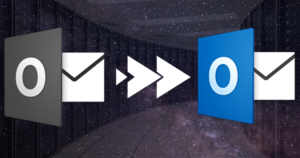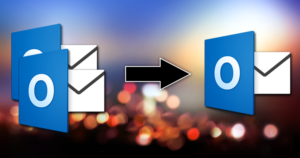Outlook is one of the most used email clients in the world. Many businesspeople use Outlook for everyday tasks, including collaboration, file sharing, and data management. Outlook is laced with several features that effectively enhance the user experience and make Outlook the first choice for users. However, after dominating the market for over a decade, users only know Outlook uses two file formats, OST and PST, to store data, which is not true. Outlook also uses NST file format, and in this write-up, we’ll discuss what Outlook NST file is, why Outlook is using it, and how one can open it in Microsoft Outlook.
What is Outlook NST file format?
NST is also known as Group Storage Table (GST). Now, as the name defines, you might have understood the function of the NST file format. Outlook uses it to store the group emails of Office 365 in Outlook. Outlook NST files work using the same structure as OST files. If you’re a bit techy or have used Outlook 2016 or earlier versions of Outlook and configured them with Office 365, you surely have an Office365.nst file in your system.
Due to less awareness, serval users ignore NST files until they need them for very important tasks or other related scenarios. The only way to configure the NST file to Outlook is by converting it into PST format.
Many of you might be wondering why we need to open Outlook NST file, so below are the reasons.
Reasons to open NST files in Outlook?
- Access Office 365 Group Data: As mentioned above, NST files store the group data of Office 365, and sometimes users need to access the conversation of Office 365 groups, calendar events, or other shared files. The only way to access these is by converting the NST file to PST format and opening it in Outlook.
- Offline Access: NST files work similarly to OST files, allowing users to access group data even offline. Hence, you can work without a constant internet connection.
- Synchronization: NST files help to synchronize data between the local machine and the Office 365 cloud. It works as a mediator between the local machine and the Office 365 cloud and synchronizes the changes made offline later when an internet connection is available.
- Performance Improvement: Storing group data in an NST file improves Outlook’s performance as it reduces the load from the OST file that is stored on the server.
- Archiving and Backup: Another reason to open NST files is to back up Office 365 Group data or to archive older group data.
Whatever the reason for you to open an NST file, the only way is to convert it into PST format and then upload/open the PST file to Outlook. Now, you might be wondering how to convert NST files to PST format. So below is the answer for you:
How do you open the Outlook NST file in Outlook?
To be honest, no manual method is available to open Outlook NST files. Fortunately, users can utilize a third-party tool like Shoviv OST to PST converter tool to change the NST file into PST format and then open the PST file in Outlook to get access to the NST file data.
Shoviv is a trusted brand for email management tools and is highly praised by Microsoft MVPs and users. The tool has several user-oriented features, making it a one-stop solution to manage OST and NST files and convert them into PST format.
Features of Shoviv OST to PST Converter
- It allows users to convert multiple Outlook NST files into PST format without any hassle and glitches.
- Users can recover the orphaned or corrupted NST files of any Outlook version.
- The tool offers a preview of added file data, including the metadata, so users can verify they got the data they need.
- It has a filter option that allows users to exclude unwanted data from proceeding into the PST file and makes the process desired.
- The tool works with all versions of Outlook and Windows operating systems. You can check its compatibility by installing the free version of the software.
Now, as we provide the free version to users to evaluate their software skills, we’ll guide you through how you can use the tool to convert NST files to PST format.
Steps to Open NST File in Outlook using Shoviv’s tool
- Step 1: Install and Open the software in your system.
- Step 2: Click on the Add OST file option and browse the NST file you want to open in Outlook.
- Step 3: Now, the software will preview the added NST file data; you can preview it to ensure that your file has the required data.
- Step 4: Click on the Outlook PST option from the ribbon bar to convert the NST file into PST format.
- Step 5: Check/uncheck the folder you want to include or exclude from converting into PST.
- Step 6: Browse a location to save the resultant PST file and click on the Next. Choose another option as per requirements.
- Step 7: Use the filter option on message data and message class-based criteria. Once done with all the steps, click Next, and the software will convert your NST file into PST format.
Voila! You can now upload the converted NST file into Outlook to open it. The software is laced with a user-oriented GUI, which makes using this software a cakewalk even for non-technocrats.
Also Read: What is Cached Exchange Mode in Outlook?
Conclusion:
Only a few users know about Outlook NST files, but they hold crucial data, which is everything regarding business continuity. Here, we’ve discussed a few reasons to open files in Outlook, along with the tool, making the task a pinky-finger game. We recommend users install and use the free version of the tool and check its skills and compatibilities before making any investment. You can also contact us through the live chat option to learn more about the tool.
- Why is My Outlook Not Displaying Email Body Content? - February 24, 2025
- Why My Outlook Calendar Disappeared From Navigation Pane? - February 3, 2025
- Gmail Archive vs. Delete: Which Should You Choose & When? - January 20, 2025


